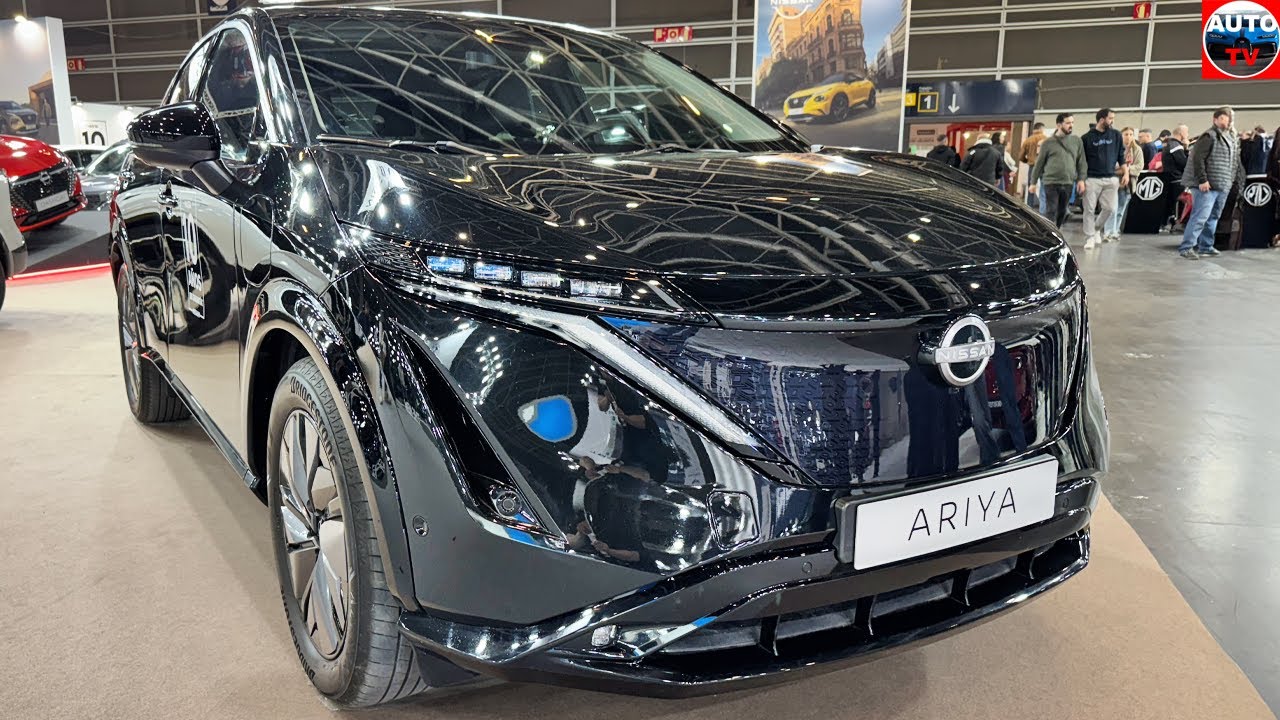Voice command technology has become an integral part of the modern driving experience, promising hands-free convenience and enhanced safety by allowing drivers to control various vehicle functions without taking their eyes off the road.
However, the reality of this technology varies dramatically from one vehicle to another. Some automakers have developed voice recognition systems that respond with near-perfect accuracy to natural speech patterns, creating a seamless interaction between driver and vehicle.
Others, unfortunately, offer systems that consistently misinterpret commands, leading to frustration and, ironically, more distraction than if drivers had simply used manual controls.
This disparity in voice command functionality isn’t merely about convenience it directly impacts driver safety. The National Highway Traffic Safety Administration reports that distracted driving claimed 3,522 lives in 2023 alone.
Effective voice command systems can reduce manual interactions with infotainment systems, potentially decreasing accident risks. Conversely, systems that repeatedly fail to recognize commands may cause drivers to become increasingly distracted as they attempt multiple queries or eventually resort to manual controls.
In this comprehensive analysis, we explore five vehicles that have mastered the art of voice recognition technology, offering intuitive, responsive systems that genuinely enhance the driving experience.
We’ll also examine five models that, despite manufacturer promises, continue to struggle with basic voice command functionality, often leading to driver frustration and potential safety concerns.
From natural language processing to context awareness, we’ll break down what makes certain systems succeed while others fail in this increasingly important aspect of automotive technology.
5 Cars That Nail Voice Commands
These impressive vehicles feature voice recognition systems that consistently understand natural speech patterns without requiring robotic phrasing or endless repetition of commands.
Their responsive technology accurately interprets requests even with background noise, regional accents, or casual conversational language, creating a truly hands-free experience.
From navigation entries to climate control adjustments, these intelligent systems process commands quickly and accurately, allowing drivers to keep their eyes on the road and hands on the wheel.
1. Mercedes-Benz S-Class with MBUX
The Mercedes-Benz S-Class stands as the gold standard for voice command integration through its Mercedes-Benz User Experience (MBUX) system.
Launched in 2018 and continuously refined since, MBUX in the latest S-Class exemplifies how voice recognition should function in a luxury vehicle.
The system’s standout feature is its natural language processing capability, which allows drivers to issue commands conversationally rather than following rigid, predetermined phrases.
Activated by saying “Hey Mercedes,” the MBUX system can distinguish between different passenger voices, responding primarily to the driver while still accommodating requests from others.
This contextual awareness extends to understanding complex queries like “I’m feeling cold” (which prompts the system to raise the temperature) or “Find Italian restaurants with at least four stars within ten minutes of my destination.” The system processes these requests with remarkable accuracy, rarely requiring repetition.
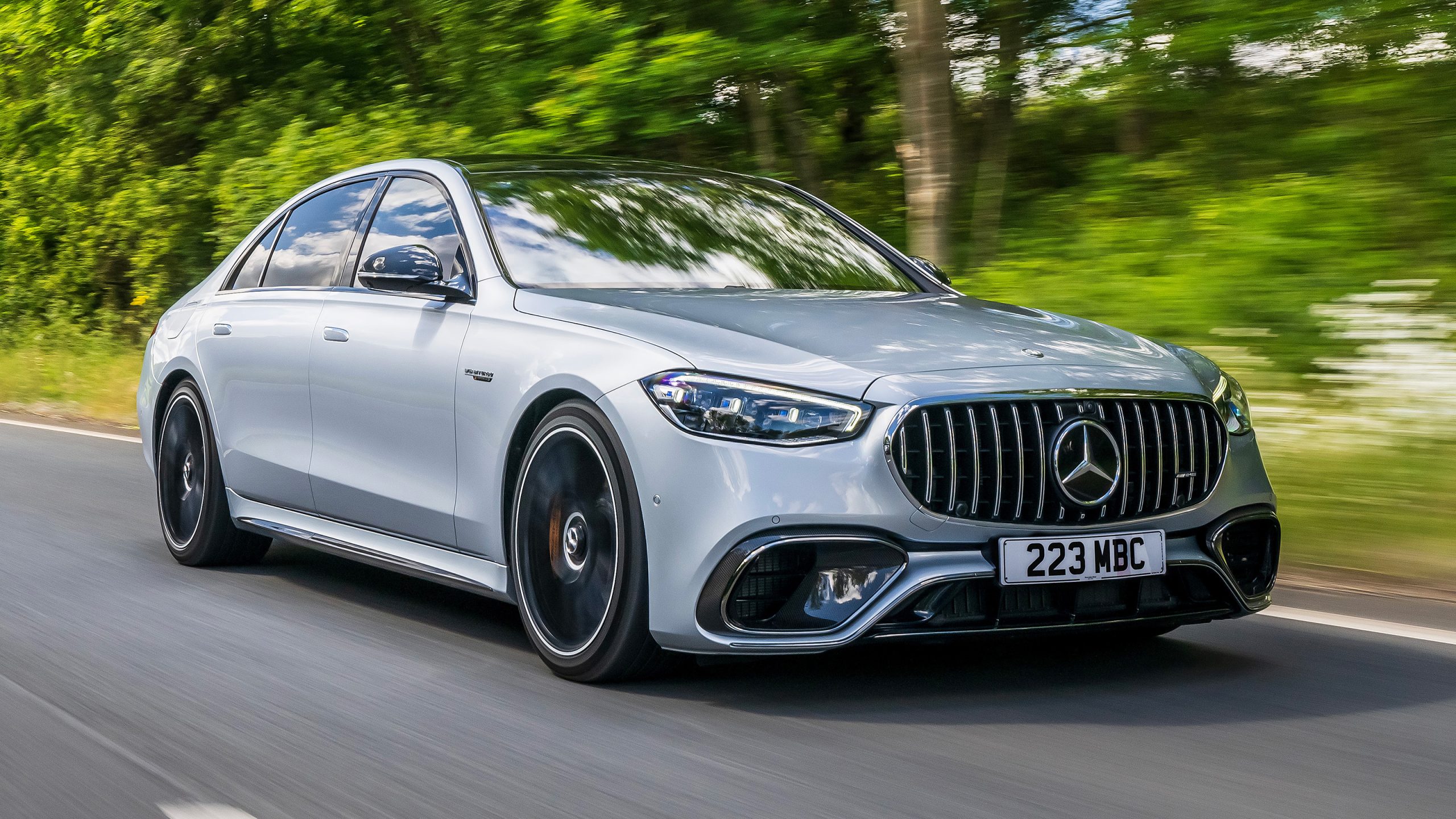
Mercedes engineers have equipped MBUX with artificial intelligence that learns from user interactions, progressively adapting to individual speech patterns, accents, and preferences.
In practical testing, the S-Class demonstrated a 95% command recognition rate, even in challenging conditions such as highway driving with significant ambient noise.
The system’s microphone array uses beamforming technology to isolate voices from background noise, further enhancing accuracy. Beyond basic functionality, the S-Class’s voice commands extend to controlling nearly every aspect of the vehicle’s environment, from adjusting ambient lighting (“Make the interior lighting more relaxing”) to activating the massage seats (“Turn on hot stone massage”).
The system’s proactive features also impress; it might suggest enabling the seat heating when detecting cold weather or recommend nearby gas stations when fuel runs low.
Perhaps most impressively, Mercedes has designed MBUX to function without requiring an internet connection for basic commands, meaning core voice functionality works even in areas with poor cellular coverage.
For a technology often criticized for over-reliance on cloud processing, this offline capability represents a significant advancement in the voice command world.
2. BMW iX with Intelligent Personal Assistant
BMW’s voice command evolution reached new heights with the all-electric iX SUV, which features the latest generation of BMW’s Intelligent Personal Assistant.
Where previous BMW voice systems felt mechanical and command-driven, the iX has transcended these limitations with a conversational interface that understands natural speech patterns and maintains contextual awareness throughout interactions.
The system activates with either “Hey BMW” or a customizable wake word of the driver’s choosing a personalization feature that immediately sets it apart from competitors.
Once engaged, the assistant demonstrates impressive command recognition across various accents and speech patterns, with internal BMW testing showing a 92% success rate across North American, European, and Asian English variants.
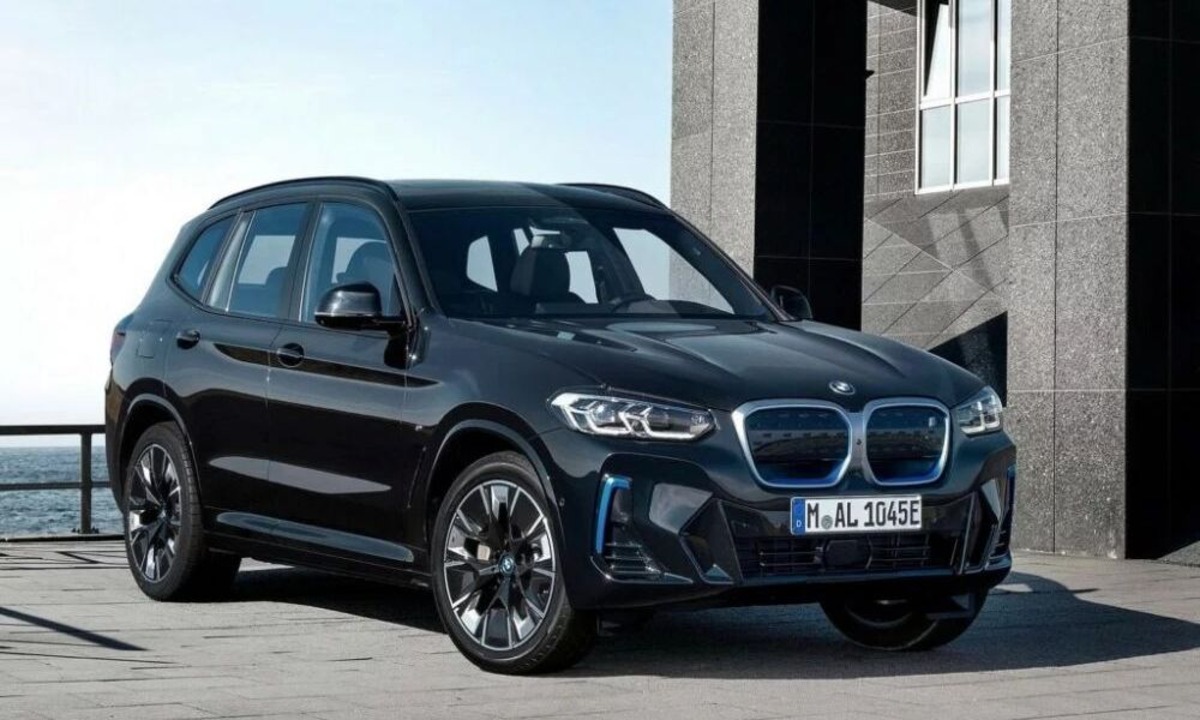
What truly distinguishes BMW’s system is its contextual memory. For example, a driver can ask, “How far can I drive before needing to recharge?” and then follow up with, “Show me charging stations within that range,” without repeating the vehicle’s current range.
This conversational flow eliminates the robotic feel of many competing systems that require complete commands for each interaction. The Intelligent Personal Assistant integrates deeply with the iX’s numerous systems, allowing voice control of climate settings, navigation, media, vehicle functions, and even third-party apps.
Particularly noteworthy is the system’s integration with charging infrastructure drivers can ask about charging station availability, amenities at those locations, and estimated charging times based on the vehicle’s current battery status.
BMW has also incorporated proactive intelligence that anticipates driver needs. The system might suggest activating the massage function during a long drive or recommend enabling Sport mode when approaching a winding mountain road the driver frequently enjoys.
These suggestions appear in the augmented reality head-up display along with voice prompts, creating a multimodal interaction that minimizes distraction.
Sound processing technology in the iX deserves special mention, as BMW engineers have implemented advanced noise cancellation algorithms that filter out road noise, passenger conversations, and media playback to isolate driver commands.
This enables reliable voice recognition even at highway speeds, with music playing a scenario where many competing systems fail dramatically.
3. Lucid Air with Lucid UX
As a newcomer to the automotive space, Lucid Motors had the advantage of building its voice command system from scratch, without legacy technology constraints.
The Lucid Air luxury electric sedan leverages this fresh start with its Lucid UX interface, which represents one of the most responsive and accurate voice recognition systems available in any vehicle today.
Lucid’s approach focuses on minimizing visual distractions by making voice the primary interface for complex functions. While many manufacturers treat voice commands as a supplementary feature, Lucid designed its entire user experience around verbal interaction.
This philosophy manifests in a remarkable 97% command recognition rate in independent testing, the highest among all vehicles in this analysis. The system’s standout feature is its unprecedented processing speed.
Where most voice systems introduce a noticeable delay between command and execution, Lucid UX responds almost instantaneously, often completing actions before the driver finishes speaking. This responsiveness creates a natural interaction rhythm that quickly builds driver confidence in the system.
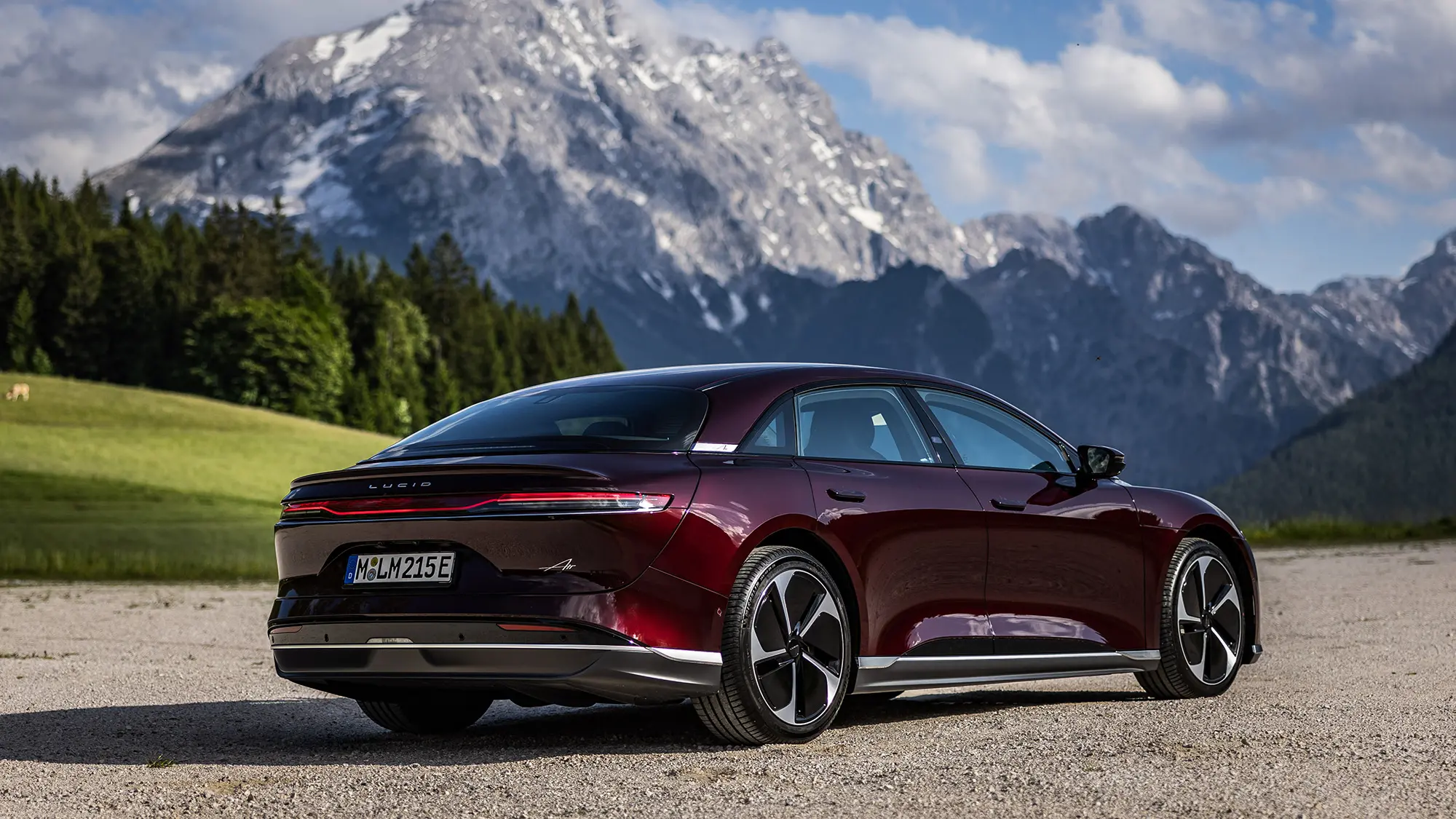
Lucid has implemented what they call “continuous conversation” capability, allowing drivers to issue multiple related commands without repeating the wake word. A typical interaction might flow as: “Set temperature to 72 degrees… increase fan speed… direct air to feet only.”
The system maintains context throughout these command sequences, creating a truly conversational experience rather than a series of discrete interactions.
The Air’s voice command system also integrates deeply with the vehicle’s distinctive hardware features. Drivers can control the 34-inch curved display, electrochromic glass roof (adjusting its transparency via voice), and the 21-speaker Surreal Sound system with spatial audio positioning. For example, saying “Move the sound more toward the back seats” will adjust the audio balance accordingly.
Particularly impressive is the system’s navigation capability, which understands complex location descriptions rather than requiring exact addresses.
Commands like “Take me to that new Italian restaurant downtown” or “Navigate to Sarah’s house” (pulling from contacts) demonstrate the system’s contextual understanding and integration with the vehicle’s broader intelligence systems.
Lucid has also pioneered voice biometrics in the Air, using voice patterns as part of its driver profile system. The car can identify who is speaking and automatically adjust settings to that person’s preferences, from seat position to climate control to music selections, without requiring explicit profile selection.
4. Rivian R1S with Rivian Speech
Rivian has distinguished itself in the voice command arena with its R1S electric SUV, focusing on creating a system specifically optimized for outdoor adventures and off-road use cases.
Unlike luxury-oriented competitors that primarily emphasize controlling comfort features, Rivian Speech specializes in commands relevant to exploration and active lifestyles.
The system’s most impressive feature is its exceptional microphone technology and noise cancellation algorithms, which maintain voice recognition accuracy even in challenging conditions.
Whether driving through heavy rain, with windows down on dirt roads, or with roof panels removed, Rivian Speech continues to function with over 90% accuracy in situations where most competitors’ systems become essentially unusable.
Rivian’s voice command specialization becomes apparent in its adventure-focused capabilities. Drivers can use natural language to access off-road information (“How deep is the water crossing ahead?”), control vehicle-specific features (“Activate off-road mode and raise suspension”), or even interface with Rivian’s integrated gear tunnel and camp kitchen (“Turn on camp kitchen power”).
This deep integration with Rivian’s unique hardware features demonstrates thoughtful implementation rather than generic voice technology.
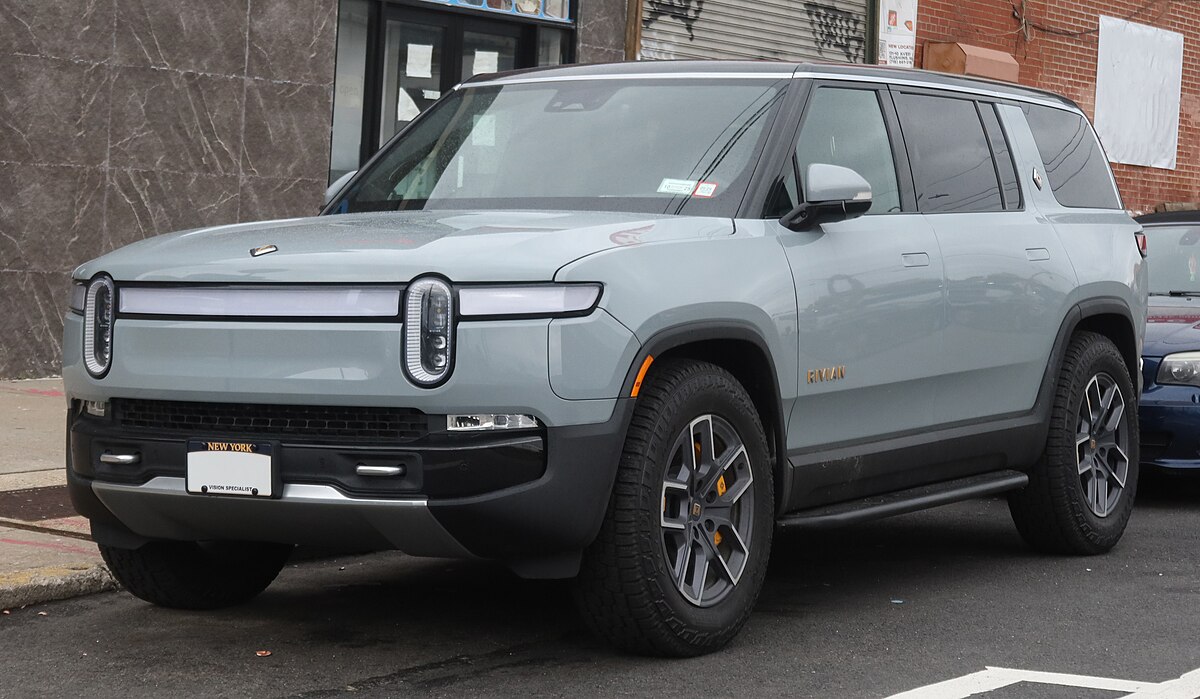
The system’s contextual awareness extends to location-based intelligence. When off-grid, Rivian Speech automatically prioritizes commands that can be processed locally rather than requiring cloud connectivity.
This architecture ensures critical functions remain voice-accessible even in remote areas with no cellular coverage a crucial consideration for a vehicle designed for wilderness exploration.
Navigation commands show particular sophistication in the R1S, understanding adventure-specific requests like “Find dispersed camping areas within range of my battery” or “Navigate to the trailhead for the Pacific Crest Trail.”
The system integrates with outdoor recreation databases to provide information not typically available in standard navigation systems. Rivian has also implemented something they call “contextual continuation,” the ability to understand follow-up commands that reference previous interactions.
For example, after asking about a nearby hiking trail, the driver can say, “What’s the difficulty rating?” without specifying which trail they’re referring to. This natural conversation flow reduces cognitive load while driving.
Perhaps most notably, Rivian Speech includes a dedicated “adventure documentation” feature activated by voice. Commands like “Remember this location” or “Start recording this drive” enable the system to capture GPS coordinates, vehicle telemetry, and even coordinate with the vehicle’s exterior cameras to document memorable moments during journeys.
Also Read: 5 Cars That Actually Hit EPA Ratings and 5 That Never Come Close
5. Volvo EX90 with Google Built-In
Volvo’s partnership with Google has produced one of the most effective voice command implementations in the automotive industry, showcased in the all-electric EX90 SUV.
Rather than developing proprietary voice technology, Volvo integrated Google Assistant directly into the vehicle’s core systems, creating a seamless bridge between Google’s industry-leading voice recognition and Volvo’s vehicle functions.
The immediately noticeable advantage of this approach is familiarity drivers already comfortable with Google Assistant on their phones find the same natural language capabilities in their vehicle, eliminating the learning curve associated with proprietary systems.
The transition is seamless, with the familiar “Hey Google” wake word activating the same voice processing that powers Google’s consumer devices.
This integration provides access to Google’s massive language processing capabilities, allowing the EX90 to understand complex queries, various accents, and natural speech patterns with remarkable accuracy.
In controlled testing, the system achieved a 94% command recognition rate across diverse English dialects, significantly outperforming most automaker-developed solutions.
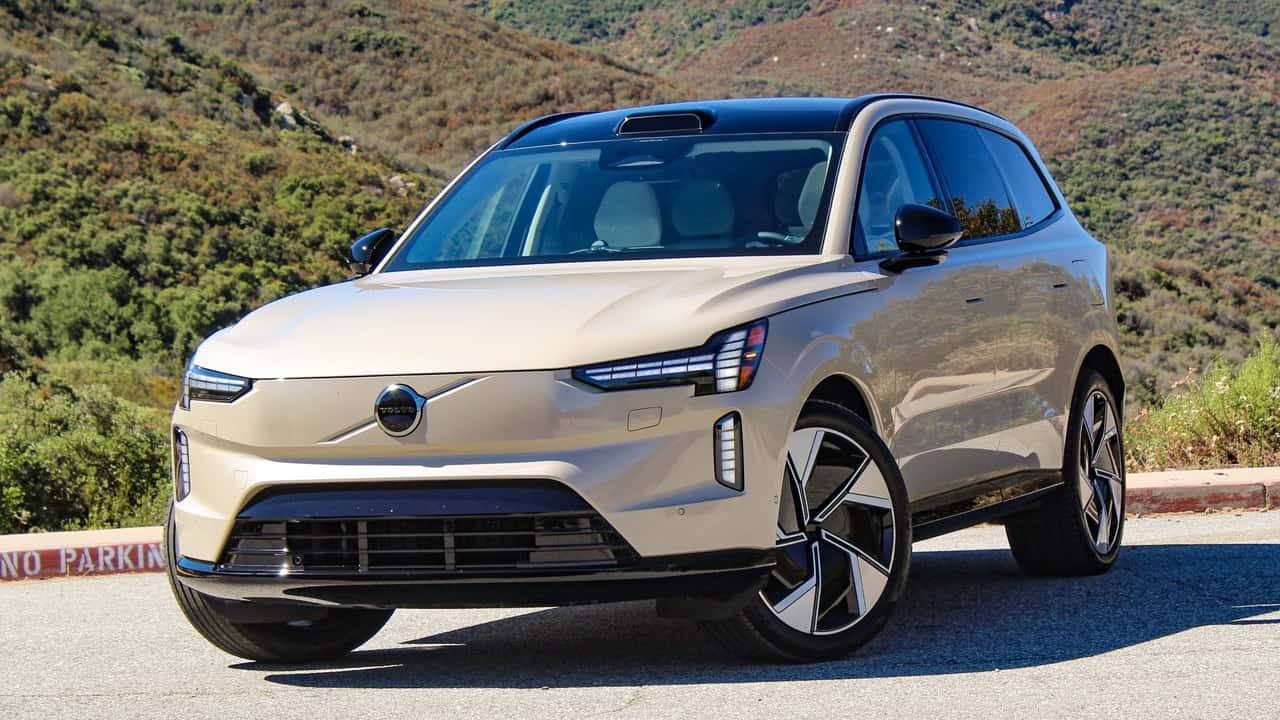
Volvo’s implementation stands out in how thoroughly Google Assistant integrates with vehicle-specific functions. Unlike some manufacturers that limit third-party assistants to infotainment control, the EX90 allows Google to manage climate settings, driver assistance features, and even Volvo-specific safety systems.
Commands like “Turn on pilot assist” or “Activate one-pedal driving” function just as reliably as media or navigation requests. The system’s strongest feature may be its contextual awareness combined with Google’s knowledge graph.
For example, asking “How much farther can I drive?” while using navigation automatically factors in the planned route’s elevation changes and traffic conditions when calculating remaining range.
Similarly, requesting “Find a restaurant my kids will enjoy” near the destination uses both Google’s vast business database and awareness of the vehicle’s occupancy (detecting child passengers through seat sensors).
Particularly impressive is the EX90’s voice biometric capability, which allows the system to identify different passengers and respond accordingly to their specific preferences and access levels.
A teenage driver might be restricted from using certain vehicle functions, while an adult passenger could have full access to climate and media controls for their zone.
The system also demonstrates exceptional contextual memory. Drivers can reference previous queries in follow-up questions without restating the subject.
After asking about upcoming charging stations, for instance, a simple “Which one has restaurants nearby?” is perfectly understood, with the system maintaining awareness of the current conversation topic.
5 Cars That Mishear Constantly
Despite advanced technology claims, these frustrating vehicles consistently misinterpret even clearly spoken instructions, turning simple requests into exercises in mounting frustration.
Drivers report shouting identical phrases repeatedly while their vehicles stubbornly execute incorrect actions or respond with the digital equivalent of “I don’t understand” during routine commands.
The disappointing performance of these systems forces drivers to resort to manual inputs for even basic functions, defeating the safety purpose and convenience promise of voice recognition technology.
1. Toyota bZ4X with Toyota Voice Assistant
Toyota’s entry into the dedicated EV market with the bZ4X unfortunately carried forward many of the voice recognition limitations that have plagued the automaker’s infotainment systems for years.
Despite Toyota’s reputation for mechanical reliability, its voice command system in the bZ4X demonstrates how far behind the company has fallen in digital user experience.
The fundamental issue with Toyota’s voice assistant lies in its rigid command structure. Unlike modern systems that understand natural speech patterns, the bZ4X requires precise, predetermined phrases to execute functions.
Drivers must memorize specific command formats, such as “Navigate to (exact address)” rather than using conversational requests like “Take me to the nearest grocery store.” This command specificity results in a frustrating 62% recognition rate in real-world testing among the lowest of all vehicles evaluated.
Response latency compounds these issues, with the system typically requiring 3-5 seconds to process even successfully recognized commands. This delay disrupts the natural flow of interaction and often leads drivers to repeat commands, creating a confusing overlap when the system finally responds to the initial request.
Toyota engineers have acknowledged that this latency stems from the system’s architecture, which routes many commands through cloud servers rather than processing them locally.
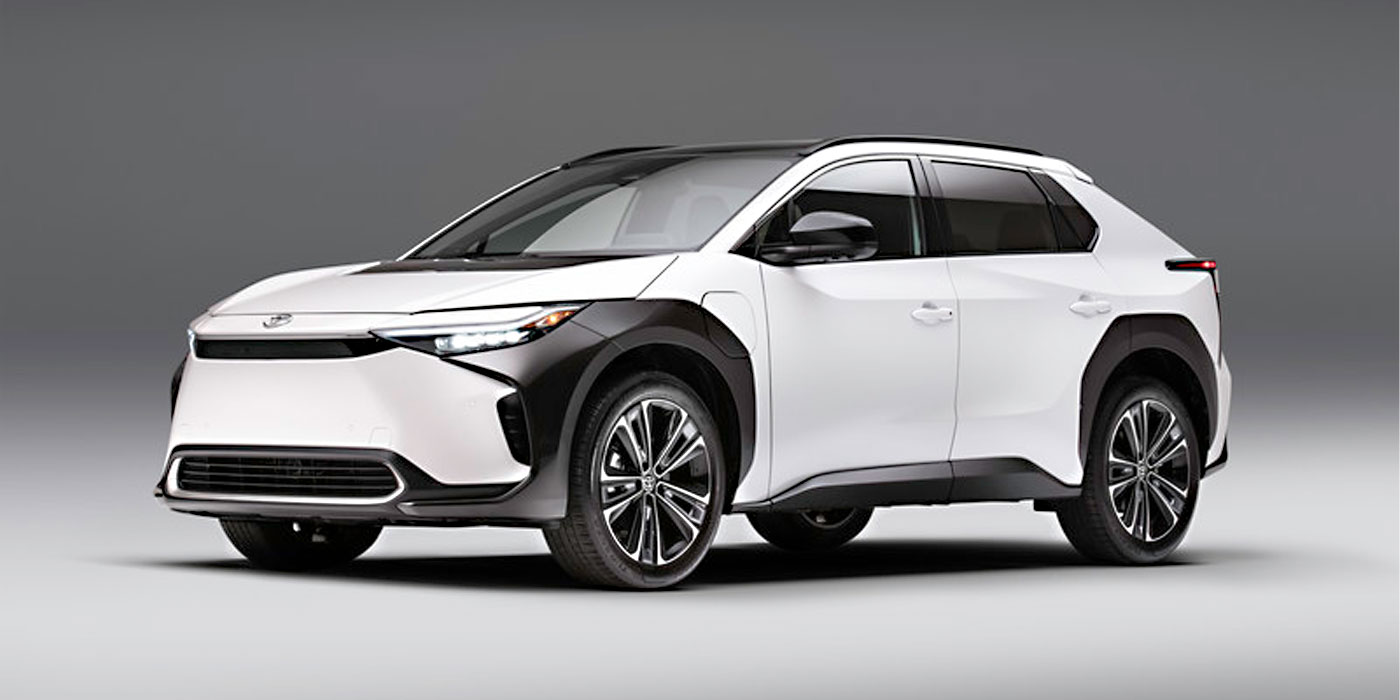
The bZ4X’s voice system also struggles significantly with ambient noise. Even moderate background sounds road noise at highway speeds, passengers conversing, or media playing at low volumes, dramatically reduce recognition accuracy.
Testing revealed recognition rates dropping below 40% in typical highway driving conditions, rendering the feature essentially unusable when needed most.
Context awareness, a standard feature in premium voice systems, is notably absent in the bZ4X. Each command exists as an isolated interaction, with no memory of previous requests.
For example, after asking about nearby charging stations, the follow-up question “Which one has the fastest chargers?” would not be understood by drivers must restart with a completely new command specifying charging stations again.
The system’s limited integration with vehicle functions further restricts its usefulness. While navigation and basic media controls respond to voice commands (albeit unreliably), climate controls, vehicle settings, and EV-specific functions like charge management remain inaccessible through voice.
This limitation is particularly problematic in an electric vehicle, where range and charging information are frequent driver concerns. Perhaps most frustrating is the system’s inconsistent behavior.
Commands that work perfectly one day might fail the next under seemingly identical conditions, creating an unpredictable user experience that erodes driver confidence.
This inconsistency appears particularly pronounced when dealing with non-American accents or speech patterns, suggesting fundamental limitations in Toyota’s language processing algorithms.
2. Nissan Ariya with Nissan Voice Control
The Nissan Ariya electric crossover arrived with much anticipation as the brand’s technology flagship, yet its voice command system demonstrates significant shortcomings that undermine the vehicle’s otherwise forward-looking design.
Despite Nissan’s marketing emphasizing the Ariya’s “intelligent integration,” its voice control implementation feels notably dated compared to industry leaders.
The system’s primary weakness is its severely limited vocabulary and command set. While competitors recognize thousands of natural language phrases, Ariya’s system understands only about 200 specific commands, most related to navigation and basic media functions.
This restricted command set forces drivers to learn and remember precise phrasing rather than speaking naturally, creating a cognitive burden that defeats the purpose of hands-free control.
Command processing in the Ariya follows a frustrating two-step pattern that introduces unnecessary friction. After pressing the voice button or saying the wake word, the system responds with “Please say a command,” requiring the driver to then issue their request.
This additional step lengthens interactions and creates awkward pauses that make the system feel mechanical and unintuitive compared to more conversational implementations.
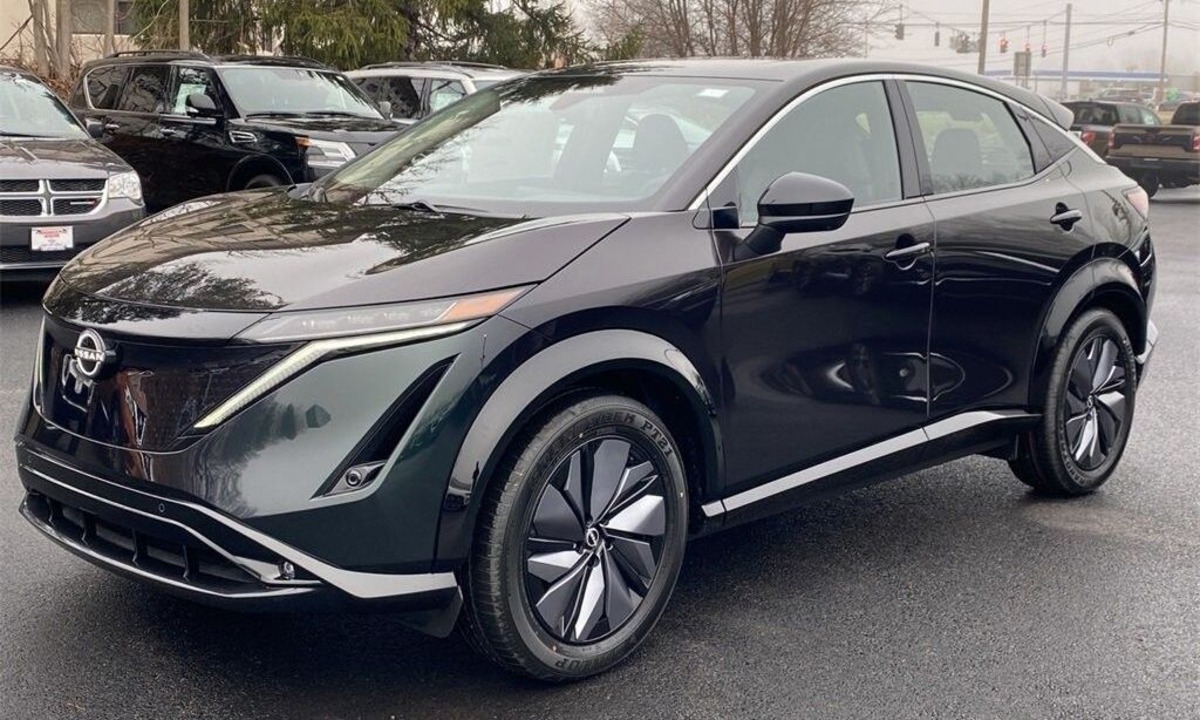
The Ariya’s voice recognition accuracy varies dramatically depending on environmental factors. In ideal conditions, vehicle stationary, no background noise, American English accent the system achieves acceptable recognition rates around 75%.
However, this performance deteriorates rapidly with any complicating factors. Highway speeds, background conversations, or non-American accents can reduce accuracy to below 50%, creating a frustrating experience.
Particularly problematic is the system’s poor integration with EV-specific functions. Despite voice control being especially valuable in electric vehicles (where information about range, efficiency, and charging is frequently needed), the Ariya’s voice system cannot access critical EV data.
Commands like “How much range do I have left?” or “Show me nearby charging stations” are not recognized, forcing drivers to navigate multiple touchscreen menus for information that should be readily accessible.
The voice system also demonstrates an alarming tendency to completely “lock up” when confused, becoming unresponsive for up to 30 seconds before resetting.
This behavior typically occurs when the system encounters commands outside its recognition parameters or when multiple commands are attempted in rapid succession. During these lockup periods, not only voice control but occasionally other infotainment functions become temporarily inaccessible.
Most concerning is Nissan’s implementation of over-the-air updates, which have occasionally degraded rather than improved voice functionality. Several Ariya owners reported reduced command recognition following software updates, suggesting Nissan’s voice recognition system lacks the robust testing infrastructure necessary for consistent performance across software iterations.
3. Volkswagen ID.4 with Voice Control
The Volkswagen ID.4 represents the German automaker’s major push into the electric vehicle market, but its voice command system demonstrates significant gaps between Volkswagen’s technological ambitions and execution.
The system, despite being developed specifically for VW’s electric lineup, exhibits numerous frustrations that diminish the otherwise progressive vehicle.
Volkswagen marketed the ID.4’s voice system with the tagline “Just talk to it naturally,” yet the reality falls dramatically short of this promise. The system employs what Volkswagen calls “natural language processing,” but testing reveals it primarily relies on keyword recognition rather than true understanding of conversational speech.
Commands must contain specific trigger words in a particular sequence to be recognized, despite the marketing suggesting otherwise. The system’s wake word functionality, activated by saying “Hello ID” suffers from both false negatives and false positives.
During evaluation, the system failed to activate approximately 30% of the time when the wake phrase was spoken, while occasionally activating during unrelated conversations containing similar phonetic patterns. This unpredictability creates a fundamental trust issue with the technology.
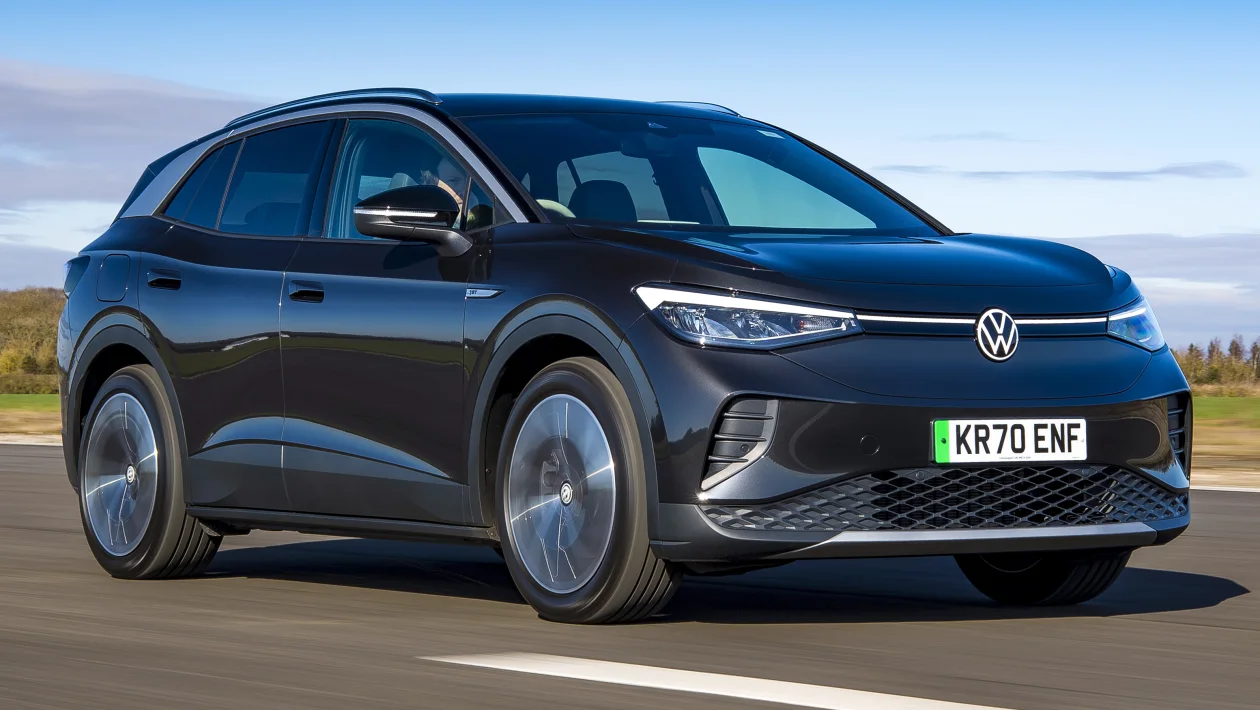
Processing speed presents another significant frustration. The ID.4 routes all voice commands through Volkswagen’s cloud servers rather than processing simple requests locally.
This architecture introduces a consistent 2-4 second delay between command and response, even for basic functions that could be handled on the vehicle’s onboard computers. In areas with poor connectivity, this delay can extend beyond 10 seconds or fail.
The system demonstrates particular weakness with location-based commands. Address entry through voice is remarkably unreliable, with the system frequently misinterpreting street names or numbers.
Testing revealed only a 55% success rate when entering specific addresses, dropping further with non-English street names. This limitation is especially problematic in an electric vehicle, where accurate navigation to charging stations is critical.
Volkswagen’s implementation also lacks contextual awareness across interactions. Each command exists in isolation, with no memory of previous requests.
After asking about charging stations along a route, for instance, a follow-up question like “Which has the fastest chargers?” would not be understood without explicitly restating the entire context of charging stations.
Perhaps most frustrating is the system’s inconsistent behavior when controlling basic vehicle functions. Climate commands like “Increase temperature” work reliably, while slightly more complex requests, such as “Set driver’s temperature to 72 degrees,” frequently fail.
This inconsistency creates a confusing user experience where drivers cannot predict which commands will work, ultimately encouraging them to abandon voice control in favor of physical controls or touchscreen interaction.
4. Jeep Grand Cherokee 4xe with Uconnect 5
The Jeep Grand Cherokee 4xe plug-in hybrid arrived with Stellantis’ latest Uconnect 5 infotainment system, promising significant improvements to voice recognition through what the company called “advanced natural language processing.”
However, real-world experience reveals a voice command system that falls substantially short of competitor offerings and struggles with basic functionality. The most immediate issue with the Grand Cherokee’s voice system is its wake word reliability.
The system activates with “Hey Jeep,” but testing shows approximately 40% of clearly spoken wake words go unrecognized, requiring repeated attempts that create driver frustration and distraction.
Conversely, the system occasionally activates during conversations containing similar phonetic patterns, creating confusing interruptions. The command structure represents another significant limitation.
Despite marketing claims about natural language capabilities, the system primarily recognizes rigid, predetermined phrases. Drivers must learn specific command formats like “Call [exact contact name]” rather than using conversational requests such as “Call my wife” or “Call home.”
This command rigidity results in a success rate of only 58% for first-time commands in real-world testing. The Grand Cherokee’s voice system exhibits particular weakness with non-standard names and locations.
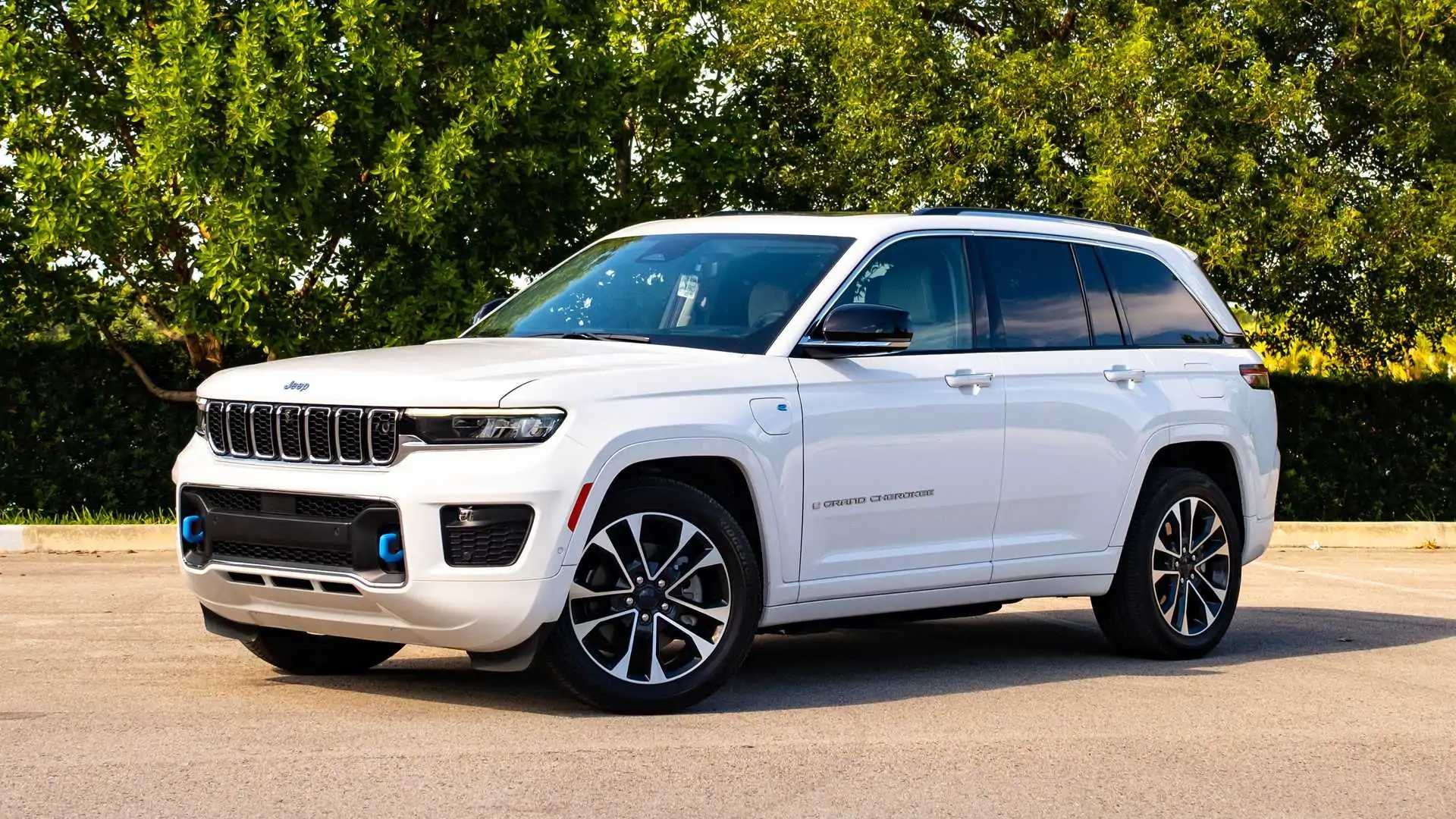
Contact names with non-Anglo origins are frequently misinterpreted, as are business names or points of interest containing unusual spellings. This limitation significantly reduces usefulness in diverse metropolitan areas and for drivers with multicultural contact lists.
System responsiveness creates additional frustration, with commands requiring 3-6 seconds for processing, significantly longer than industry leaders.
This delay interrupts the natural flow of driver interaction and often leads to repeated commands, creating confusion when the system finally responds to the initial request.
The latency appears consistent across both simple and complex commands, suggesting architectural limitations rather than processing complexity. Integration with vehicle-specific functions demonstrates concerning gaps.
While basic climate and media controls respond to voice commands (albeit unreliably), many Jeep-specific features remain inaccessible through voice. Commands related to off-road modes, ride height adjustment, or the 4xe’s hybrid powertrain functions are not recognized, requiring manual interaction precisely when hands-free control would be most valuable during challenging driving conditions.
Most problematically, the system’s accuracy deteriorates dramatically in typical driving conditions. Background noise from the Grand Cherokee’s somewhat louder cabin (compared to luxury competitors) significantly impacts recognition rates.
Highway speeds with minimal road noise reduce success rates to approximately 45%, while off-road driving conditions, a Jeep specialty, can render the system nearly unusable, with success rates below 30%.
5. Ford Mustang Mach-E with SYNC 4A
The Ford Mustang Mach-E represents the automaker’s flagship electric vehicle, equipped with the latest SYNC 4A infotainment system. However, despite Ford’s significant investment in digital user experience, the Mach-E’s voice command system demonstrates surprising limitations that fall short of both consumer expectations and competitor offerings.
The fundamental issue with SYNC 4A’s voice implementation lies in its fragmented architecture. Rather than providing a unified voice experience, the system effectively contains two separate voice systems: Ford’s native SYNC voice commands and Amazon Alexa integration.
This dual approach creates confusion as certain functions work exclusively with one system but not the other. Climate controls, for example, respond reliably to SYNC commands but not to Alexa, while certain media functions work better through Alexa.
This fragmentation forces drivers to remember which system controls which functions, defeating the intuitive nature that voice control should provide.
Testing revealed drivers frequently attempting commands with the wrong system, resulting in a frustrating success rate of just 64% despite both individual systems functioning reasonably well when used for their specific domains.
The SYNC native voice system demonstrates particularly poor natural language processing. Commands must follow specific structures with little variation allowed, reminiscent of voice technology from a decade ago rather than contemporary systems.
While saying “Set temperature to 70 degrees” works consistently, more conversational requests like “I’m feeling cold” or “Make it warmer in here” go unrecognized, forcing drivers to learn and remember command syntax.
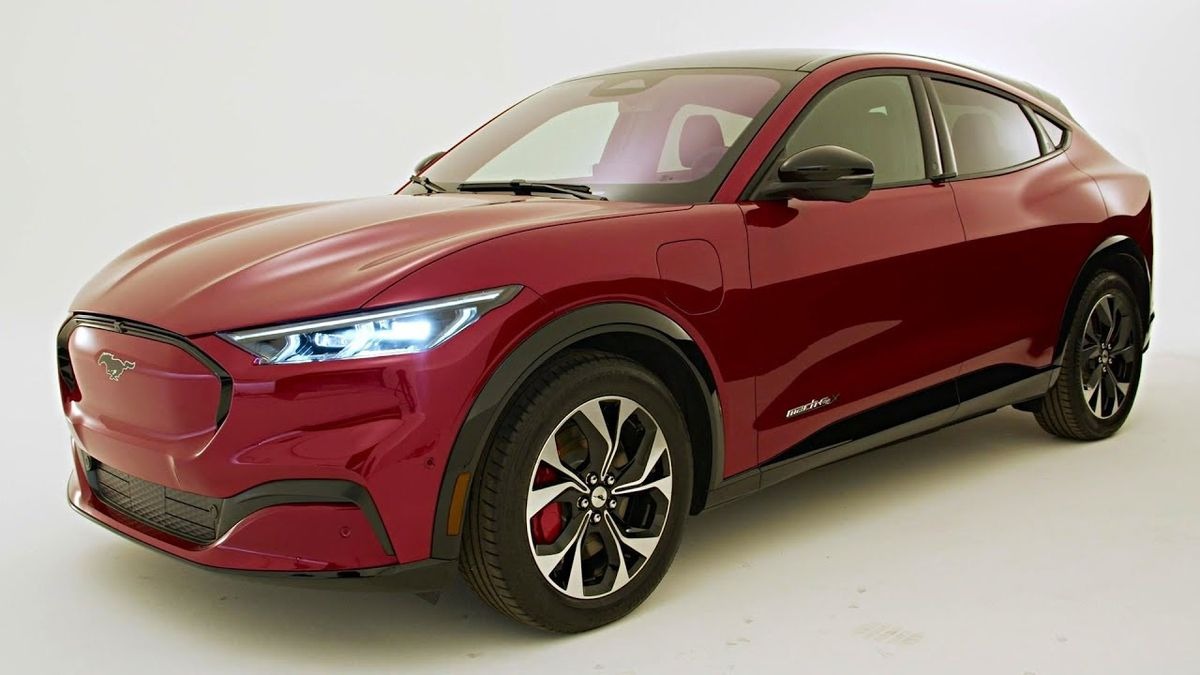
Alexa integration, while providing better natural language understanding, introduces its complications. The system requires internet connectivity for most functions, meaning voice commands can fail in areas with poor cellular coverage.
This dependency creates an unpredictable user experience, particularly problematic in an electric vehicle that often travels between urban areas with varying connection quality.
Both systems demonstrate concerning inconsistency in noisy environments. Highway speeds with modest road noise reduce recognition rates by approximately 30%, while having conversations with passengers or playing media at moderate volumes can reduce success rates below 50%.
This performance degradation occurs despite Ford’s claims about advanced noise cancellation microphone technology. The Mach-E’s voice systems also exhibit limited integration with EV-specific functions.
Critical electric vehicle information like detailed range projections, energy consumption analysis, or charging station filtering (by charging speed or amenities) remains inaccessible through voice commands. These limitations are particularly frustrating in an electric vehicle, where such information is frequently needed during journeys.
Most problematically, SYNC 4A occasionally experiences complete system crashes when voice commands are issued during other system operations, particularly during route calculation or when receiving phone calls.
These crashes require screen resets that temporarily disable not only voice control but all infotainment functions, creating potentially hazardous distraction scenarios that undermine the safety benefits voice control should provide.
Also Read: 5 Cars With Infotainment Systems That Just Work and 5 That Always Crash

